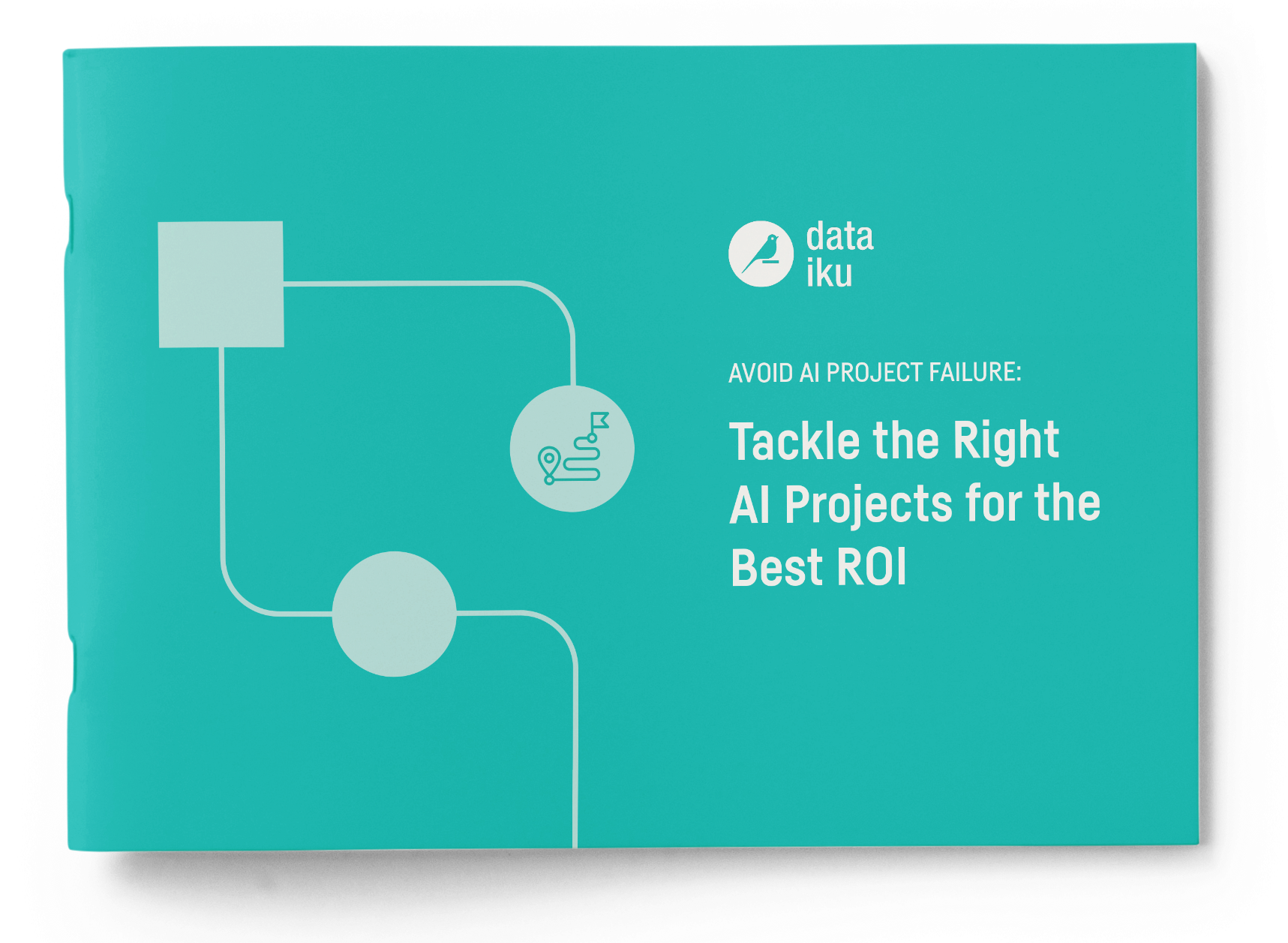Copyright © 2022 Dataiku. All rights reserved. | Online Privacy
Dataiku Flipbook
Identify AI Use Cases
A Proven Framework for AI Project Success
One surefire way to help ensure that a data or AI project makes its way out of the lab and into production (and therefore drives tangible impact for the business) is pursuing the right use case.
This flipbook highlights how to strategically choose the use cases that have both high business value and a high likelihood of success.

Download Now
Master AI Project Planning
This Blueprint Highlights Key Questions Including:
- Who a given data or AI project will benefit (i.e., intended audience)
- How it will specifically improve experiences or outcomes and how to quantify that ROI
- If the anticipated benefits justify the time and investment required to replace the existing process
- And much more!